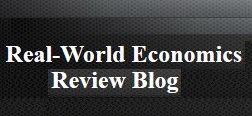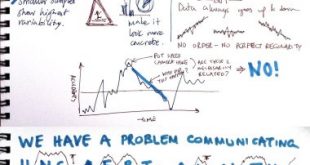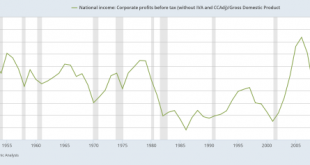Read More »
Trump and the Neocons: doing the unilateralist waltz
from Thomas Palley The neocon factor dramatically changes the interpretation of the Trump administration’s unilateralist international economic policy chatter. Donald Trump’s first one hundred days have revealed his inclination for unilateralism in international relations. That inclination reflects his opportunistic and bullying disposition, and it also fits well with his anti-globalization pose. Trump’s unilateralism has also spawned a dangerous waltz with Washington’s neocon...
Read More »Modern economics — pseudo-science based on FWUTV
from Lars Syll The use of FWUTV — facts with unknown truth values — is, as Paul Romeer noticed in last year’s perhaps most interesting insider critique of mainstream economics, all to often used in macroeconomic modelling. But there are other parts of ‘modern’ economics than New Classical RBC economics that also have succumbed to this questionable practice: Statistical significance is not the same as real-world significance — all it offers is an indication of whether you’re seeing an...
Read More »The 10 most viewed RWER Blog posts in 2016
Poll Results: Top 10 economics books of the last 100 years Summary of the Great Transformation by Polanyi Asad Zaman Reflections on the “Inside Job” Peter Radford The tiny little problem with Chicago economics Lars Syll Money and the myth of barter David Ruccio What is Post Keynesian Economics? Lars Syll The seven countries most vulnerable to a debt crisis Steve Keen The 15 largest arms exporters per capita Joseph Buzaglo Re-thinking the definition of...
Read More »Neoliberalism — an oversold ideology
from Lars Syll So what’s wrong with the economy? … A 2002 study of United States fiscal policy by the economists Olivier Blanchard and Roberto Perotti found that ‘both increases in taxes and increases in government spending have a strong negative effect on private investment spending.’ They noted that this finding is ‘difficult to reconcile with Keynesian theory.’ Consistent with this, a more recent study of international data by the economists Alberto Alesina and Silvia Ardagna found...
Read More »Making corporate taxes great again
from David Ruccio I continue to maintain that Congressional Republicans will stick with President Donald Trump until they get their favorite policies enacted—or until Trump’s missteps and declining popularity stand in the way of their getting what they want. And one of the things they want is tax reform—specifically, a cut in corporate taxes. Here’s the problem: U.S. corporations aren’t taxed too heavily. They’re taxed too little. As is clear from the chart above, corporate profits (as a...
Read More »Econometrics? Keep it very simple.
Readers of this blog might have noticed that I prefer to detrend time series using a moving average – and not the advanced and routinely and widely used Hodrick-Prescott filter. Part of this was lazyness. But I also do not like the HP filter: what is it? Why does it wag its tails so much? What is the ‘right’ smoothing parameter? James D. Hamilton has answered my questions (while implicating that loads of research is at least suspect if not worthless): Why You should never use the...
Read More »The Mathesis Universalis and Neoclassical Economics
from Maria Alejandra Madi As Edward Fullbrook highlights in his recent book Narrative Fixation in Economics, the Cartesian view of human reality has deeply shaped the way Neoclassical Economics theorizes about the economic and social existence (2016, p. 45). Indeed, while emphasizing the relevance of the pure thought of a disembedded human subject, Neoclassical Economics has reinforced the relevance of the Cartesian method of inquiry that moved the so called scientific (true) knowledge ...
Read More »Baumol’s Disease? George Will’s Misdiagnosis of U.S. Health Care Costs
from Dean Baker In his Washington Post column today George Will told readers that the problem of rising costs in the U.S. health care system is simply a case of Baumol’s disease. This refers to the problem identified by economist William Baumol (who recently died), that productivity in the service sector tends to rise less rapidly than productivity in the manufacturing sector. The implication is that if workers get paid the same in both sectors, then the cost of services will always rise...
Read More »The laws of mathematics and economics
from Lars Syll Some commentators on this blog — and elsewhere — seem to have problems with yours truly’s critique of the overly debonair attitude with which mathematics is applied to economics. In case you think the critique is some odd outcome of heterodox idiosyncrasy, well, maybe you should think twice …
Read More » Real-World Economics Review
Real-World Economics Review






